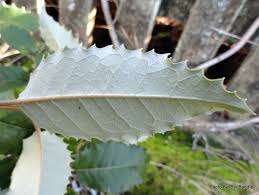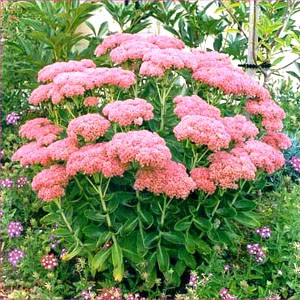Olearia macrodonta
“New Zealand Holly”
ASTERACEAE
Zone: 7/8 – 11
Native habitat: New Zealand
Conditions
Soil: Any
Moisture: well drained, drought tolerant once established, doesn’t like soggy conditions
Light: full sun (best) to part shade
Exposure: seaside; likes hot and dry
Plant size (h x w):6′ – 8’ x 5′ – 6’
Other:
Aesthetic
Shape/stem: Upright, Ridged pale grey-brown stems, peeling bark with age
Leaf: Tough, serrated grey-green with silver-white felty undersides, alternate, ovate, to 9cm
Flower: large, clusters, fragrant (fantastic scent), white daisy-like
Bloom: Summer
Other: tough and fast growing  Treatment (how to…)
Treatment (how to…)
Plant: general
Maintain: low maintenance; Clip off leaves when blacken or wait for them to fall off; can be pruned hard, but usually don’t require any pruning at all
Propagate: cutting
Uses
Landscape: can fill in a spot quickly, architectural low maintenance, hedge, screen, containers. wall-side, coastal,
Companion planting:
Medicinal:
Other: Attract beneficials (birds & butterflies)
Vulnerabilities
Pests and disease: none significant
Deer resistant: yes
Other animals:
Interest
Local info,: not native
Pot size (to purchase): Can be hard to find
Nature: vigorous medium-sized evergreen shrub
Identification (key features): see features described above and photo bellow

Cultivars: O. m. ‘Minor’ 3’ x 3’
Comments: AGM winner




































 and long lasting
and long lasting 
 slightly marbled, deep green foliage and bowl-shaped, bright violet-blue with white centre flowers that last from spring to frost
slightly marbled, deep green foliage and bowl-shaped, bright violet-blue with white centre flowers that last from spring to frost

 Aesthetic
Aesthetic

